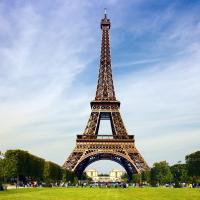At the Paris Conservatoire, Ravel was considered “self-possessed, a little aloof, intellectually biased and given to mild banter” but also described as “very gifted”. However, he failed to win sufficient prizes to launch a career as a concert pianist and returned to the Conservatoire to study composition under Fauré, to whom he became devoted. As the son of an inventor and engineer, Ravel was intensely fascinated by the different characters and capabilities of musical instruments and became admired as an orchestrator and transcriber (his orchestration of Mussorgsky’s Pictures at an Exhibition is the best-known). However, like his teacher Fauré and contemporaries such as Debussy, Ravel had to bear the disapproval and nepotism of the highly conservative French musical establishment with regard to his own compositions.
In 1909, Diaghilev brought his newly formed Ballets Russes to Paris where he began to commission original works: The Firebird and Petrushka from Igor Stravinsky in 1910-11, Daphnis and Chloe from Ravel in 1912 and, most sensationally of all, The Rite of Spring from Stravinsky in 1913.
Ravel’s orchestration and use of voices for Daphnis and Chloe was ambitious and demanding. He wrote to a friend “I must tell you that I have had a really insane week … almost every night working until 3 am. … What particularly complicates matters is that Fokine doesn’t know a word of French and I only know how to swear in Russian…” The meetings with Diaghilev and his collaborators Fokine, Bakst and Nijinsky were “chaotic” and there was constant wrangling over the ultimate artistic vision of the piece. Ravel himself was drawn less by fidelity to the historical accuracy of the Greek urns and frescoes on which Fokine wanted to base the work and much more “to the Greece of my dreams – that imagined and depicted by the late 18th-century French artists.” His frequent use of five beats to the bar drove the original dancers to distraction; in rehearsals, they took to scanning it with the impresario’s name, “Serge-Di-a-ghi-lev”.
The première, given on 8 June 1912 by the Ballets Russes at the Théâtre du Châtelet, came only ten days after the production on the same stage of the company’s adaptation of Debussy’s Prélude à l’après-midi d’un faune in which Nijinsky’s erotic finale had caused a furore. Their production of Daphnis and Chloe was not an equal success and the effort took its toll on Ravel, who became so ill towards the end of the project that he had to submit to several months of enforced rest. However, his astonishing music has justly survived in concert form. Stravinsky called it “not only Ravel’s best work but also one of the most beautiful products in all of French music”.
The story is taken from a pastoral romance by the third-century Greek poet Longus. In the ballet Daphnis and Chloe, abandoned as children and raised by shepherds, have fallen in love (the shepherd Daphnis charmed Chloe by playing for her on his pan-pipes). Chloe is abducted by pirates, but rescued by the god Pan and his satyrs. The second Suite comprises the whole of the third and last scene of the ballet.
Lever du Jour (Daybreak): As Daphnis lies prostrate before the grotto of the nymphs, the Suite begins with one of the most magical depictions of a sunrise in all music. Woodwind arpeggios represent rivulets of dew trickling from the rocks; birdsong is heard on flutes and violins, and distant shepherds play their pipes, while a huge orchestral crescendo depicts the sunrise. The shepherds wake Daphnis to re-unite him with Chloe, and their love theme is played by unison strings, accompanied by a wordless chorus. To an oboe solo, an old shepherd explains that if Pan did save Chloe it was in memory of Syrinx, a nymph the god once loved.
Pantomime: Daphnis and Chloe now re-enact the story of Pan and Syrinx. Dancing to tender and sensuous string chords and brilliant woodwind solos, Chloe impersonates the young nymph wandering in the meadow while Daphnis appears as Pan and declares his love. When his advances are rebuffed, Daphnis creates a flute from reeds and plays a melancholy tune – his complex solo is portrayed by the piccolo, flutes and alto flute. Chloe responds with an increasingly animated dance and as she finally falls into the arms of Daphnis their theme is heard in full for the last time. Solemn chords and a trumpet melody represent the moment when Daphne pledges his love for Chloe by sacrificing at the altar of the nymphs.
Danse Générale: At this point in the ballet, groups of young girls and youths invade the stage and begin a wild dance to Pan. There are glimpses of Daphnis and Chloe’s theme in the final celebrations, as the music in quintuple time becomes ever more agitated, with whirling strings and woodwinds, insistent percussion and choral voices building up to an orgiastic frenzy or, as Ravel himself described it, “joyous tumult”.
Composer: Ravel Wiki Link: http://en.wikipedia.org/wiki/Daphnis_et_Chlo%C3%A9 Title of Musical Work: Daphnis and Chloe, Suite No. 2